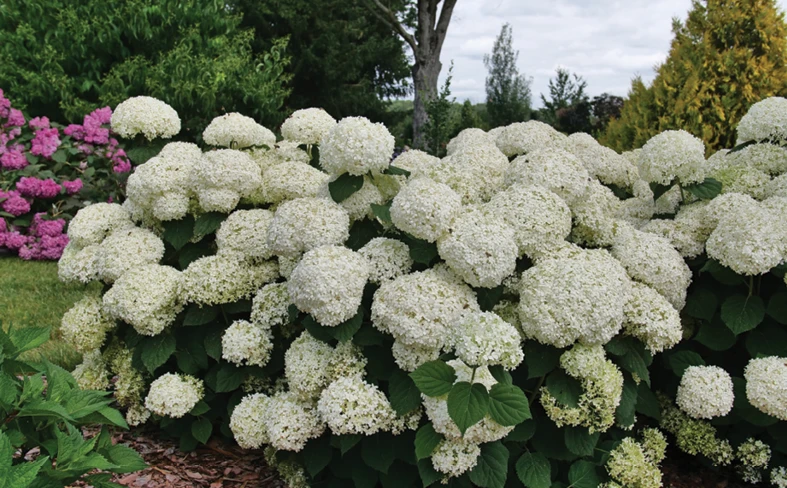 When I was in high school, my parents moved into
When I was in high school, my parents moved into
In early spring, before most of the leaves had begun to grow on the trees and shrubs of that fence line, one shrub flowered with such fierce abandon that it took over the whole yard. It was Mexican buckeye (Ungnadia speciosa).
Southern flowerer
Mexican buckeye occurs naturally from southern
This shrub or small tree grows 8-12 feet tall and about half that wide. It is a tidy plant with a dense branching pattern that hides the smooth, brown bark of young branches as well as the shallowly furrowed, gray bark of the oldest stems. Plants are deciduous with the leaves emerging in late April in most areas, although here in the deserts they may emerge as early as the beginning of March.
The dark-green leaves are up to 12 inches long and are pinnately compound with five to seven oval leaflets. Leaflets are often much paler, sometimes nearly gray, on the underside and each leaflet is 3-5 inches long.
But it is the flowering that is so stunning in this shrub. The half-inch flowers emerge before the leaves and range from pale pastel pink to deep rose-red. They are closely held on the stem and in most individuals are prolific and showy, and the plant looks like a pink cloud from a distance.
Flowers are followed by the distinctive three-lobed, woody capsule that looks much like the fruit of the eastern buckeye (hence the common name). The fruit is up to 2 inches wide and ultimately splits open to reveal the hard, glossy black seeds within. While birds love the fruit, the seeds are toxic if eaten by humans.
Water requirements
Mexican buckeye is adapted to a wide range of well-drained soils including dry, rocky sites as well as to soils with high alkalinity. However, in deep fertile soils, it grows more quickly than in the drier situations.
In the
Mexican buckeye is resistant to cotton root rot, which can be a serious problem for some woody plants in the region. Plants are hardy to at least 5°F, and possibly more.
There is a lot of variation within species over its natural range. Plants in the western part of the range are often smaller in stature as well as have smaller leaves than those that occur further south and east. The western populations also tend to have darker flowers.
I brought back seed many times from that fence line plant over the years and grew them for a time when I worked at the
Specifics
Name: Ungnadia speciosa
Common name: Mexican buckeye.
Family: Sapindaceae.
Description: A dense, rounded shrub or small tree to 12 feet (much smaller on drier sites). Compound leaves are large and deciduous, turning bright yellow before they fall. Flowers are before the leaves, pink, and held in dense clusters along the stems. Fruit is an attractive three-part capsule with bright, shiny black seeds.
Hardiness: To at least 5°F.
Propagation: Scarified seed in the late spring or early summer.
Distribution: Southern New Mexico, west and south
{sidebar id=2}
- Mary Irish,
May 2008





